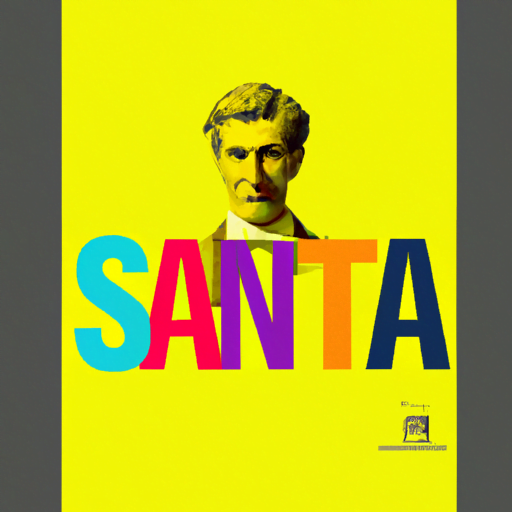-
Table of Contents
Stefan Sagmeister: A Creative Force in Design
Stefan Sagmeister is a renowned graphic designer and artist known for his innovative and thought-provoking work. With a career spanning over three decades, Sagmeister has made significant contributions to the field of design, pushing boundaries and challenging conventional norms. This article explores the life, work, and impact of Stefan Sagmeister, highlighting his unique approach to design and the lessons we can learn from his creative journey.
Early Life and Education
Stefan Sagmeister was born in Bregenz, Austria, in 1962. From a young age, he showed a keen interest in art and design, which led him to pursue a formal education in graphic design. Sagmeister studied at the University of Applied Arts Vienna, where he honed his skills and developed a deep understanding of design principles.
After completing his studies, Sagmeister moved to New York City in 1991, where he worked for renowned designer Tibor Kalman at M&Co. This experience proved to be a turning point in Sagmeister’s career, as he gained exposure to a diverse range of projects and clients, allowing him to refine his design sensibilities.
The Sagmeister & Walsh Era
In 1993, Stefan Sagmeister founded his own design studio, Sagmeister Inc., which later evolved into Sagmeister & Walsh when Jessica Walsh joined the firm as a partner in 2012. Together, they created a dynamic and innovative design studio that produced groundbreaking work across various mediums.
Sagmeister & Walsh’s work is characterized by its boldness, playfulness, and attention to detail. They have collaborated with numerous high-profile clients, including The Rolling Stones, HBO, and the Guggenheim Museum. One of their notable projects was the album cover design for The Rolling Stones’ “Bridges to Babylon,” which received critical acclaim for its striking visual concept.
The Power of Design as a Storytelling Medium
One of the key aspects of Sagmeister’s work is his ability to use design as a storytelling medium. He believes that design should evoke emotions, provoke thoughts, and engage the audience on a deeper level. Sagmeister often incorporates elements of humor, irony, and wit into his designs, creating a powerful narrative that resonates with viewers.
For example, in his project titled “The Happy Show,” Sagmeister transformed a gallery space into an immersive experience that explored the concept of happiness. Through a combination of interactive installations, typography, and visual elements, he encouraged visitors to reflect on their own happiness and the factors that contribute to it.
Embracing Self-Expression and Personal Projects
Throughout his career, Stefan Sagmeister has emphasized the importance of self-expression and personal projects. He believes that designers should take time to explore their own ideas and passions, as it allows for creative growth and innovation.
Every seven years, Sagmeister takes a sabbatical from client work to focus on personal projects. During these periods, he immerses himself in new experiences, travels, and experiments with different mediums. This approach not only rejuvenates his creative spirit but also leads to the development of groundbreaking ideas.
One of Sagmeister’s most notable personal projects is “The Happy Film,” a documentary that explores the elusive nature of happiness. In this film, he candidly shares his personal struggles and experiments with various techniques to achieve happiness. Through this project, Sagmeister demonstrates the power of design to communicate complex ideas and emotions.
Lessons from Stefan Sagmeister
Stefan Sagmeister’s career and body of work offer valuable insights and lessons for designers and creatives alike. Here are some key takeaways:
- Embrace experimentation: Sagmeister’s willingness to experiment with different mediums and techniques has allowed him to create groundbreaking work. Designers should not be afraid to step outside their comfort zones and explore new possibilities.
- Design with purpose: Sagmeister’s work is driven by a strong narrative and purpose. Designers should strive to create meaningful and impactful designs that resonate with their audience.
- Balance work and personal projects: Taking time for personal projects and self-expression is crucial for creative growth. Designers should allocate time to explore their own ideas and passions, as it can lead to innovative breakthroughs.
- Design for emotion: Sagmeister’s ability to evoke emotions through design is a testament to the power of visual communication. Designers should aim to create designs that elicit emotional responses and engage the audience on a deeper level.
Conclusion
Stefan Sagmeister’s contributions to the field of design have been significant and far-reaching. His innovative approach, emphasis on storytelling, and dedication to personal projects have made him a creative force to be reckoned with. Sagmeister’s work serves as an inspiration for designers to push boundaries, embrace experimentation, and create designs that leave a lasting impact. As we continue to navigate the ever-evolving world of design, we can look to Sagmeister’s journey as a guiding light, reminding us of the power of creativity and the importance of self-expression.
